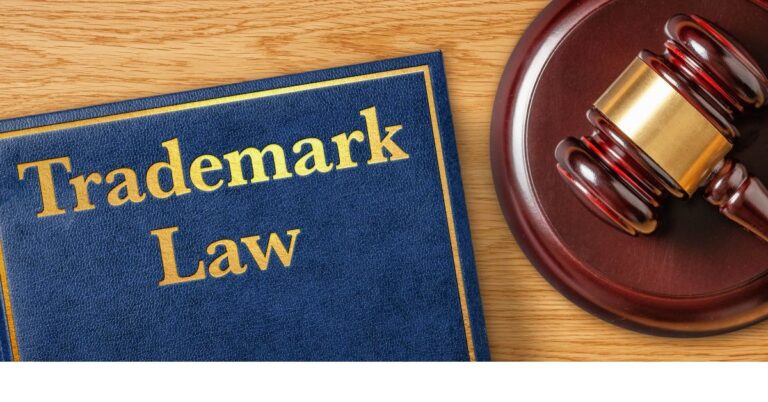Introduction
The shareholders being the owners of a company, appoint directors in a company and directors acting as agents of a company play a significant role in effectuating the business operation of a company and taking key managerial decisions in accordance with the Memorandum of Association (“MOA”) and Articles of Association (“AOA”) of the company. There are various statutory provisions with respect to appointment, removal, meetings, and powers of the directors under the Companies Act, 2013 (the “Act”). It is important to focus on the powers of the board of directors and shareholders as disputes among the board of directors may arise from time to time.
To have a better understanding of the concept, let us understand this through a hypothetical situation. For instance, in XYZ private limited company (the “Company”) there are three directors “A”, “B” and “C”. “A”, being an NRI is also the majority shareholder in the Company, “B” is the minority shareholder and is an Indian Resident Director and “C” is also an Indian Resident Director in the Company. There has been a dispute between the directors of the Company and “A” wants to understand his legal rights under the Act to protect his interest in the Company.
To have a deeper understanding of the above-mentioned scenario, some of the fundamental questions that may arise are elucidated herein.
1. Does “A” require other director’s approval to make decisions in relation to the Company?
Yes, the power to make key decisions with respect to the functioning of the Company lies with the Board of Directors. As per section 179 of the Act, the Board of Directors of the Company is entitled to exercise all such powers and to do all such acts and things, as the Company is authorized to perform as per AOA and MOA. The Board of Directors may exercise the following powers on behalf of the Company by means of resolutions passed at the meetings of the Board, namely:
- To make calls on shareholders in respect of money unpaid on their shares.
- To issue and buy back securities.
- To invest the funds of the Company.
- To borrow monies, grant loans, give guarantee or provide security in respect of loans.
- To approve financial statements of the Company, interim dividends and board’s report.
- To diversify the business of the company
- To approve amalgamation, merger, takeover, diversification or reconstruction.
- To appoint directors, auditors (subject to approval by shareholders at their meeting) and key managerial personnel.
- To shift the registered office; and
- To take note of the disclosure of the Director’s interest and shareholding.
To exercise the above-mentioned powers, a resolution is to be approved by the Board of Directors of the Company with a majority as per the quorum of a meeting of the Board of Directors. Further, for the regularization of the director and appointment of an auditor, approval by a majority of shareholders will be required. The quorum of the meeting of the Board of Directors of the Company, as per section 174 of the Act, shall be at least one-third of its total strength or two directors, whichever is higher. The directors may also participate by way of video conferencing or by any other audio-visual means and such participation shall also be counted for the purposes of the quorum.
Therefore, “A” shall require support from one of the other directors in order to exercise the aforesaid powers.
2. What are the rights of “A”? Can “A” terminate the services of the other directors and appoint new directors of his choice?
Set out below are the following ways in which “A” can terminate the services of other directors:
Removal of director by shareholders
Section 169(1) of the Act empowers the Company to remove a director from its board unless he has been appointed as a director by the tribunal. This power may be exercised by the shareholders by passing an ordinary resolution after giving him a reasonable opportunity to be heard. The procedure for the removal of the director is as follows:
- A special notice to the Company is required for the removal of a director.
- On receipt of notice of a resolution to remove a director, the Company shall forthwith send a copy thereof to the director concerned, and the director, whether or not he is a shareholder of the Company, shall be entitled to be heard on the resolution at the meeting.
- The affected director is entitled to make a representation in writing and can ask the Company to circulate the same to all the shareholders of the Company. The Company shall be bound to circulate the same if there is adequate time and if there is paucity of time then his representation has to be read out at the meeting.
- The resolution for removal of the director shall be passed by the majority of the shareholders.
Suo Moto resignation from the director
Other directors may suo moto resign from the directorship of the Company. Thereafter, “A” shall undertake the noting of their resignation/acceptance of their resignation in the board meeting of the Company as per section 168 of the Act. Once the Company/board of directors has accepted the resignation, thereafter, the necessary form i.e., e-Form DIR-12 is required to be filed with the Registrar of Companies (“ROC”), Ministry of Corporate Affairs (“MCA”) to effectuate the resignation of the director. The Resigning Director may also notify his resignation separately to ROC, MCA by filing e-form DIR-11.
Vacation of office of the director
If any director fails to comply with any of the provisions under section 167 of the Act, then he shall be required to vacate the office of the director.
As per section 167(1)(b) of the Act, a director has to vacate his office if he remains absent for a continuous period of twelve (12) months from the board meeting of the Company even if the leave of absence has been granted to him by the board. This would be adequate grounds to disqualify him and remove him from the office of director.
In such a scenario, “A” would be required to establish the proof of service of notices of board meetings to the concerned director(s) whom he wishes to remove from the post of directorship. The notice of the board meeting shall be dispatched through the registered post with acknowledgement due, as the postal department now has ceased the certificate of posting facilities and also through the registered email address of the director(s) with read receipts of the mail sent with clear seven (07) days notice under the Act or such longer time as provided under AoA of the Company. Further, the notice should specify that if the director wants to participate through audio or video conferencing, then such director has to give prior intimation for the same to the company to make necessary arrangements. This will ensure that the director(s) have received the notice and have gone through the contents of the notice of the board meeting.
3. Can “A” shut down the Company?
Yes, “A” may shut down the Company in accordance with section 248 of the Act. A company not carrying on any business or operation for a period of two (02) immediately preceding financial years and has not made any application within such period for obtaining the status of a dormant company, then a company may, after extinguishing all its liabilities, upon receiving approval from a majority of the board of directors and passing a special resolution approved by seventy-five (75) per cent shareholders in terms of paid-up share capital, file an application through e-Form STK-2 to the Registrar, Centre for Processing Accelerated Corporate Exit for removing the name of the company from the register of companies. Before making such an application, the Company is required to file its overdue financial statements under section 137 of the Act and overdue annual returns under section 92 of the Act, up to the end of the financial year in which the Company ceased to carry out its business operations. Upon verification and scrutiny of the application by the Registrar, Centre for Processing Accelerated Corporate Exit, can shut down the company.
4. Can “A” hire and remove any employee he wants?
Given that “A” is one of the directors, he can hire and remove any employee in the interest of the Company unless no specific provision is mentioned in the AOA of the Company or in his internal management service agreement.
5. Can “A” appoint anyone of his choice to take control of the bank account?
“A” can appoint anyone as an additional signatory to the Company’s bank account, by passing a board resolution with the requisite majority in the board meeting of the Company.
6. How can “A” protect the assets in the office if there is a dispute? (For example- disputes related to office equipment, computers, etc.)?
If assets are owned by the Company, then they are not personal assets of any individual. The ownership in respect of such assets belongs to the Company and no one can sell or destroy these assets independently. The board of directors with the consent of shareholders of the Company by passing a special resolution shall sell, lease or otherwise dispose of whole or part of the assets of the Company.
Conclusion
After critically analysing the given scenario, it is evident that the roles, powers and responsibilities of directors and shareholders play a vital role in resolving any dispute and robust functioning of a company. While most of the details are mentioned in the Act, sometimes the company and board of directors emancipate to exercise their discretionary power according to the severity of the matter in accordance with the MOA and AOA of the company. Therefore, a company should undertake proper and comprehensive due diligence while formulating the MOA, AOA and employment contracts with the directors elucidating their roles and responsibilities to avoid future disputes.
– Sarthak Modi,
Associate, Solomon & Co.
About Solomon & Co.
Solomon & Co., (Advocates & Solicitors) was founded in 1909 and is amongst India’s oldest law firms. The Firm is a full-service firm that provides legal services to Indian and international companies and high-net-worth individuals on all aspects of Indian law.
“Disclaimer”
The information contained on this article is intended solely to provide general guidance on matters of interest for the personal use of the reader, who accepts full responsibility for its use. The application and impact of laws can vary widely based on the specific facts involved. As such, it should not be used as a substitute for consultation with a competent adviser. Before making any decision or taking any action, the reader should always consult a professional adviser relating to the relevant article posting.
Copyright © 2023 Solomon & Co., All rights reserved.





